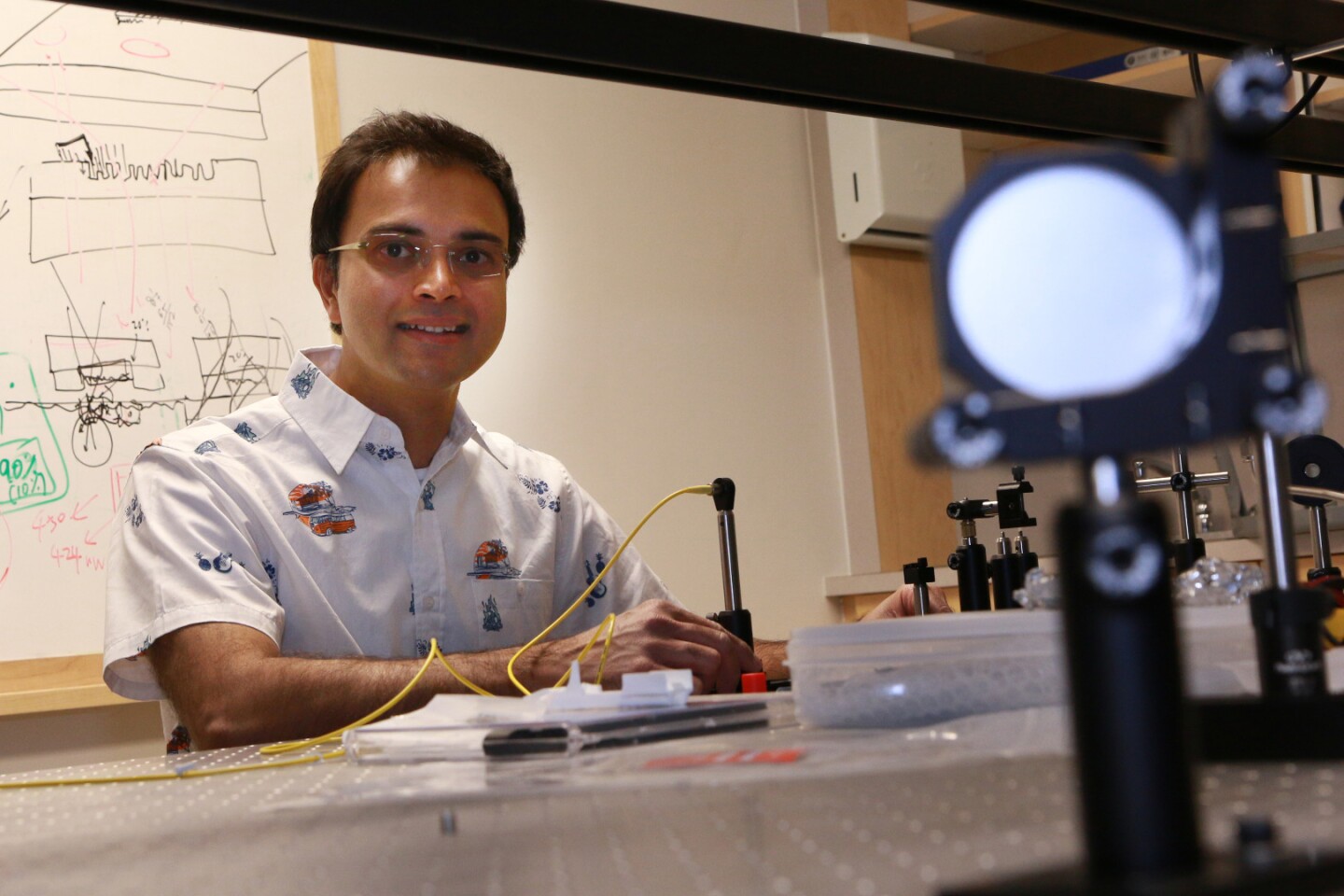Silicon photonics is an emerging technology that incorporates electronic circuits using photons of laser light rather than electrons to transmit, receive, and manipulate information. As such, a silicon photonic CPU could potentially process information at the speed of light – millions of times faster than computers available today. In a step towards this goal, engineers working at the University of Utah have developed an ultra-compact photonic beam-splitter so small that millions of these devices could fit on a single silicon chip.
The beamsplitter, claimed to be the smallest ever created at just 2.4 by 2.4 microns (about one-fiftieth the diameter of a human hair), is designed to divide incoming lightwaves in two, thereby creating two separate channels of separately polarized information. Combined with other photonics components that replace their electronic equivalents, such as transistors, diodes, and other semiconductor devices, the beamsplitter adds to the growing catalog of devices being created for future photonic computing.
"Light is the fastest thing you can use to transmit information," said associate professor in electrical and electronic engineering at the University of Utah, Rajesh Menon."But that information has to be converted to electrons when it comes into your laptop. In that conversion, you're slowing things down. The vision is to do everything in light. With all light, computing can eventually be millions of times faster.”

Not only is the new device theoretically capable of helping to exchange data at blistering speeds, but its silicon-based design means that it would also be cheaper and easier to make than similar devices because it could use existing silicon chip fabrication techniques. In addition, because photonic circuitry does not require the movement of electrons through wires, devices containing such technology would use a lesser amount of power and generate less heat, making them considerably more efficient.
Supercomputers currently under development at Intel and IBM using silicon photonics are the target of the University of Utah’s team. They believe that their beamsplitter could be ready for use in such computers within about three years, and that data centers needing faster connections may well incorporate such devices even sooner.
The results of this research by associate professor Rajesh Menon, in collaboration with research associate Randy Polson and doctoral studentsBing Shen and Peng Wang have recently been published in the journal Nature Photonics.
Source: University of Utah





